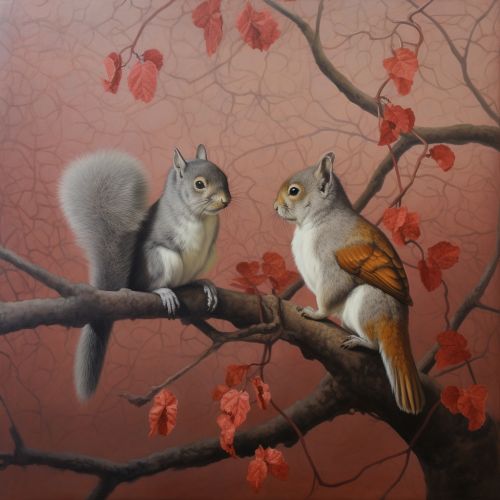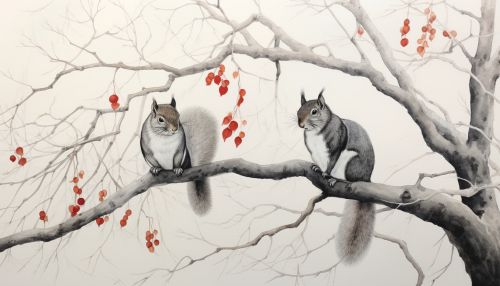Interspecific competition
Overview
Interspecific competition is a form of competition between different species of the same ecological community. It is one of the primary forces shaping the structure and function of ecological communities, influencing factors such as species diversity, community structure, and the evolution of species traits.
Definition
Interspecific competition, in the context of ecology, is defined as the negative interaction between two or more species that share common resources which are in limited supply. This competition can occur when the resources are not sufficient to fulfill the needs of all the species, leading to a decrease in the fitness of at least one of the species involved.
Mechanisms
Interspecific competition can occur through two primary mechanisms: interference and exploitation.
Interference Competition
Interference competition occurs when one species actively inhibits another from accessing resources. This can be through aggressive behavior, chemical interactions, or any other means that directly prevents another species from accessing a resource.
Exploitation Competition
Exploitation competition, on the other hand, occurs when one species is more efficient at using a shared resource, thereby depleting the availability of that resource for other species. This does not involve any direct interaction between the competing species.
Effects on Community Structure
Interspecific competition has significant effects on the structure of ecological communities. It can influence the distribution and abundance of species, the diversity of the community, and the evolution of species traits.
Distribution and Abundance
Interspecific competition can influence the spatial distribution and abundance of species within a community. For instance, if two species compete for the same resource, they may be spatially separated to reduce competition, leading to a pattern known as resource partitioning.
Diversity
Interspecific competition can also influence the diversity of a community. High levels of competition can reduce diversity by excluding less competitive species, while low levels of competition can increase diversity by allowing a greater number of species to coexist.
Evolution of Species Traits
Interspecific competition can drive the evolution of species traits. This process, known as character displacement, occurs when competition causes species to evolve different adaptations to reduce competition.
Examples
There are numerous examples of interspecific competition in nature. One of the most famous examples is the competition between the red and gray squirrels in the United Kingdom. The introduction of the gray squirrel led to a significant decline in the red squirrel population due to competition for food resources.
Another example is the competition between lions and hyenas in African savannas. These two species compete for the same prey, and this competition has influenced their hunting strategies and behaviors.
See Also


